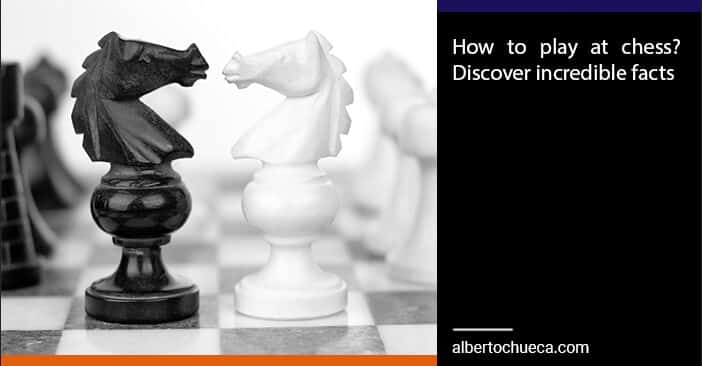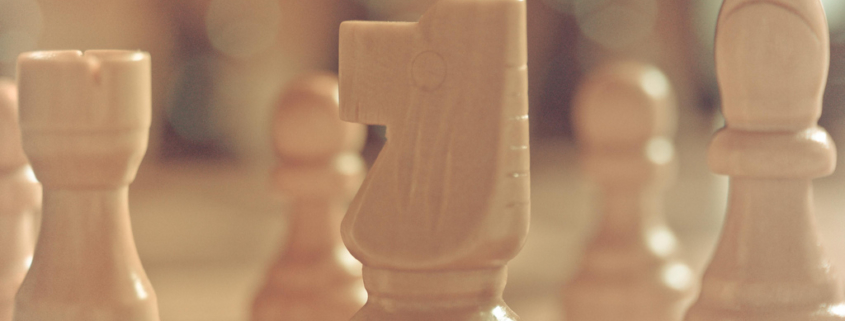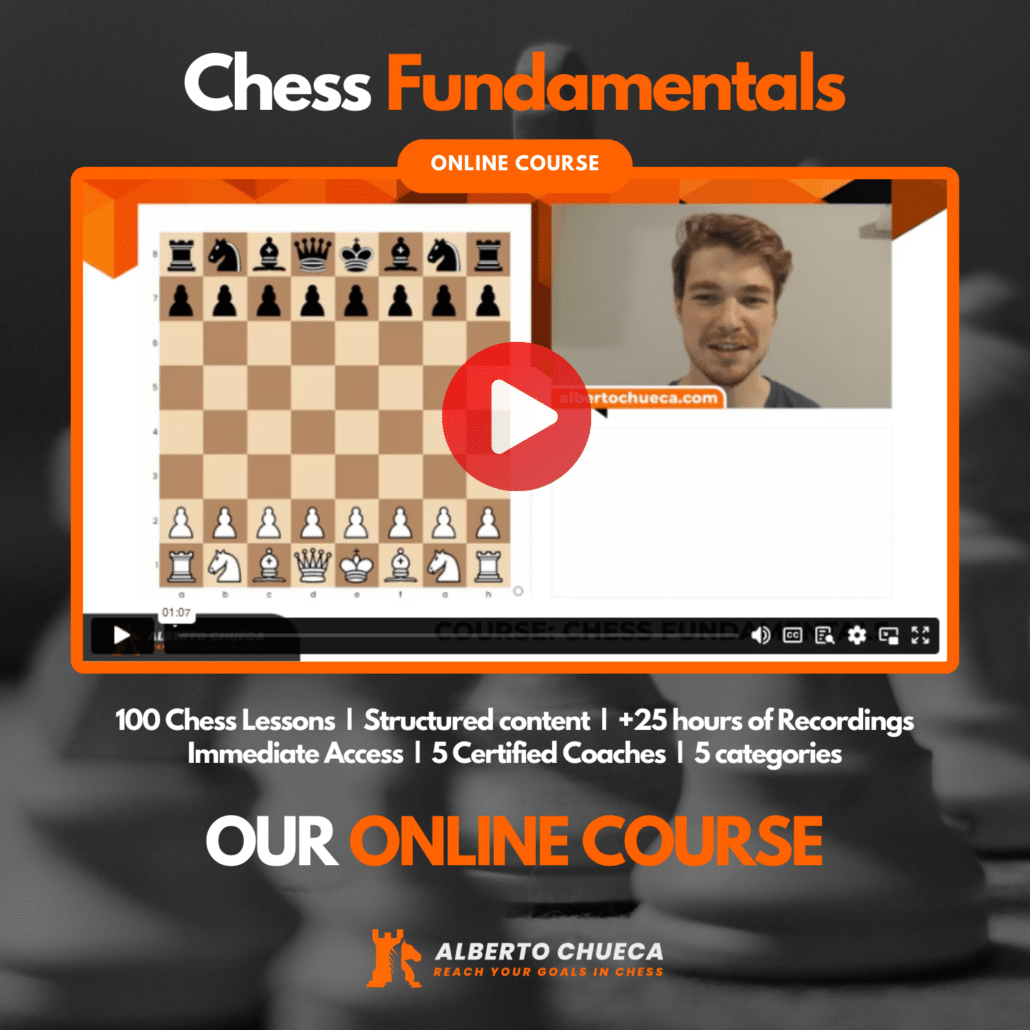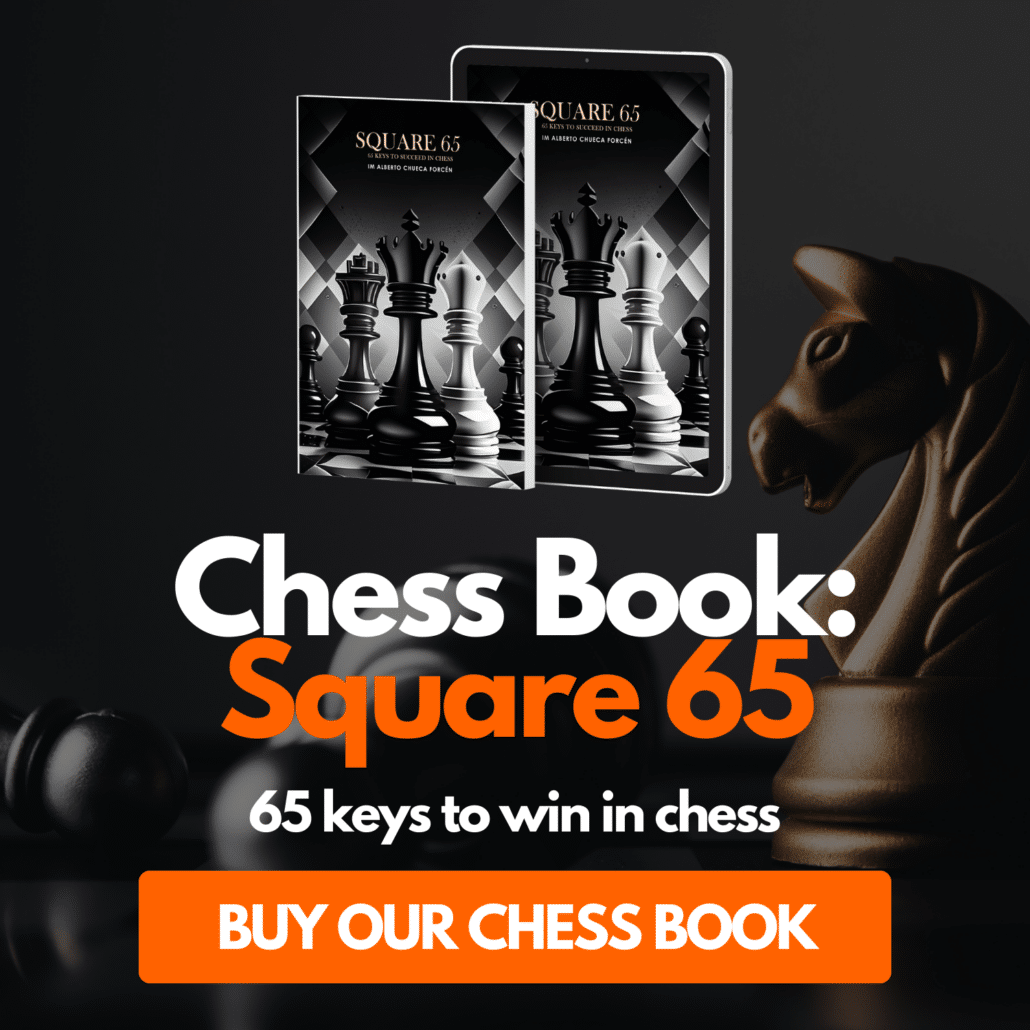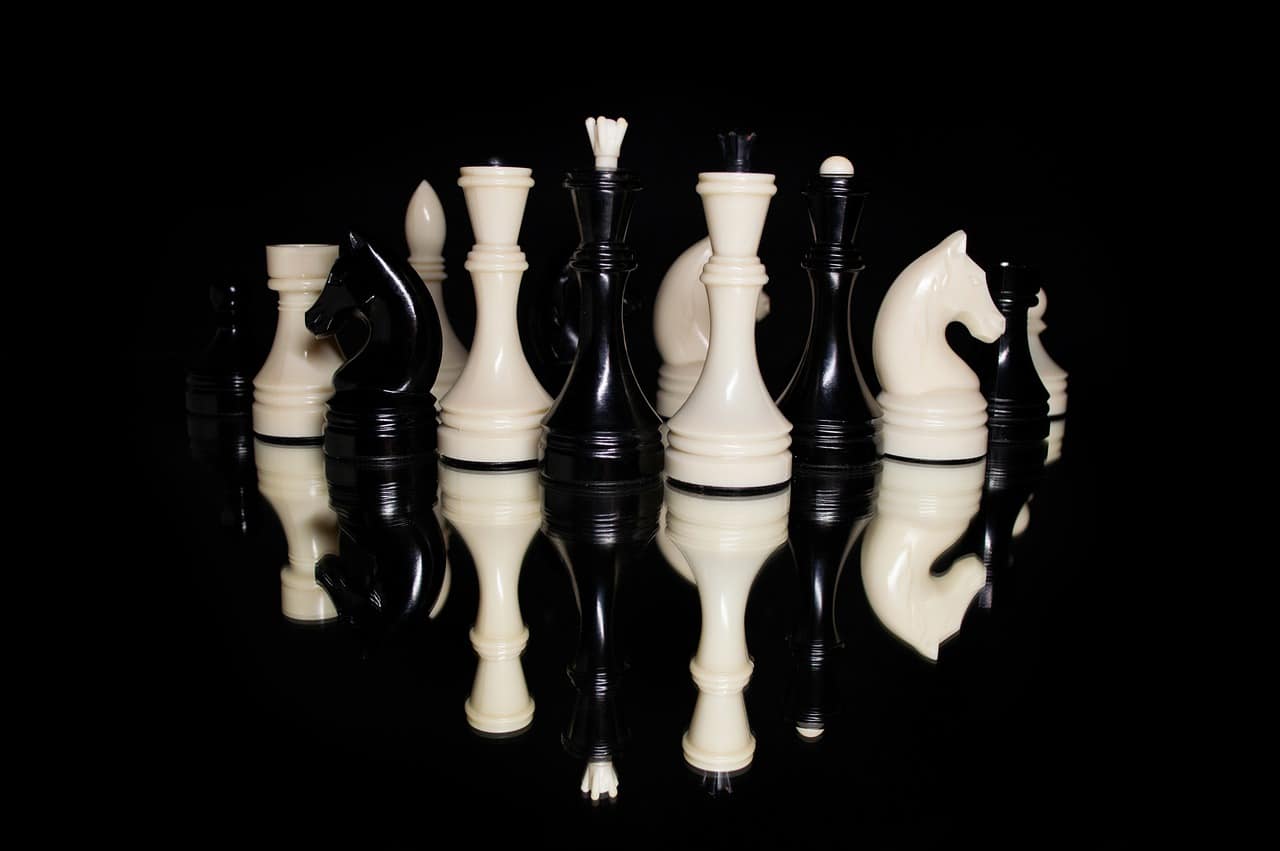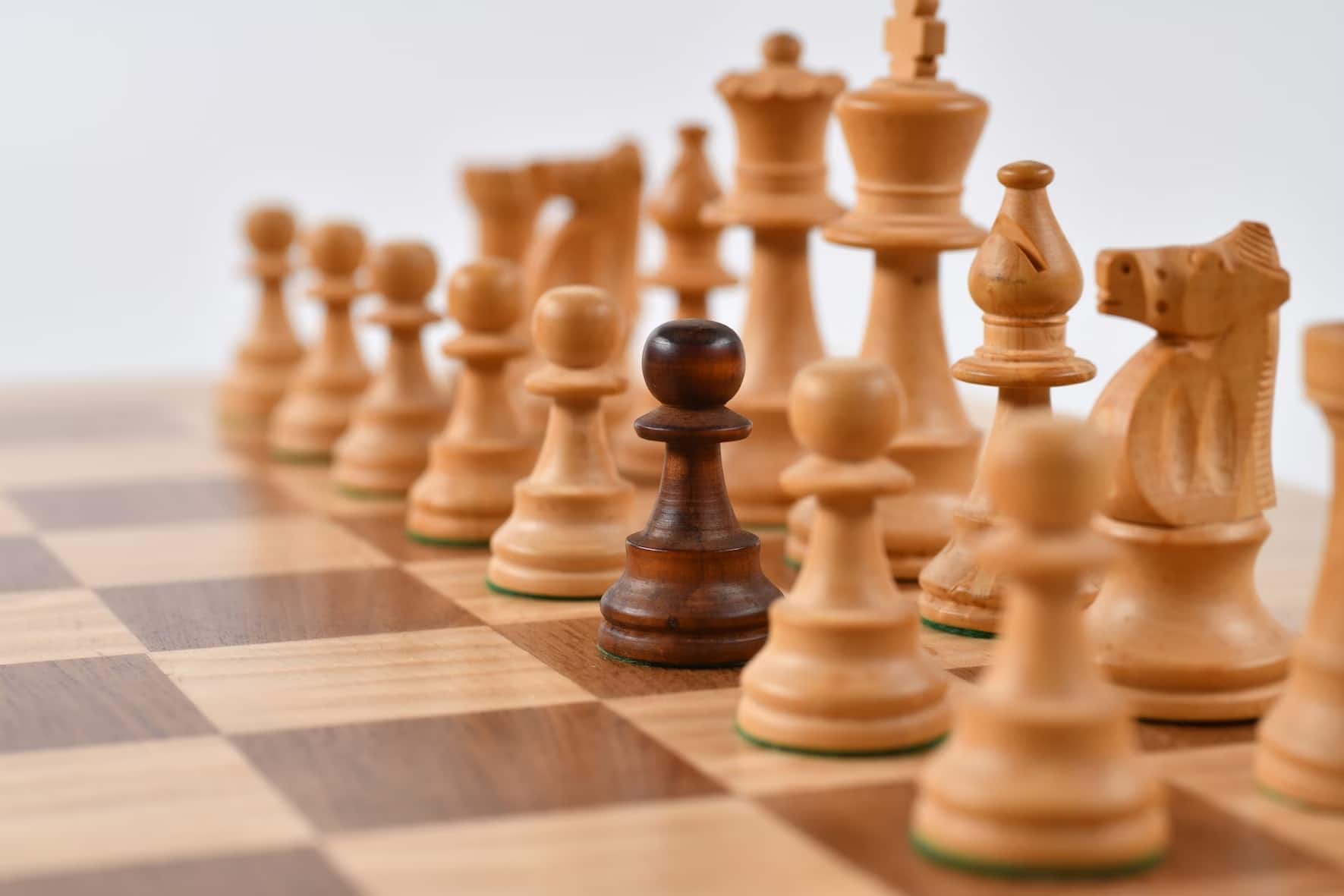Table of Contents
Learn how to play chess: The moves
If you are reading this article you might want to learn how to play chess. The most important part about learning how to play chess has nothing to do with chess itself but your will to learn it.
Such dispositions consist of: being interested, investing time in it and being constant. Without any of these requirements, it will be difficult for you to see progress in the chess games you play. We will provide you below with a basic understanding of chess.
How to play chess (I) – The Board
The first thing you need to know in order to learn how to play chess is the board. For those familiarized with chess, the first thing to note is that a chessboard is an 8×8 squared board; resulting in 64 squares, 32 light and 32 dark, laid out alternatively.
The second thing is that, for didactic reasons, squares are grouped into three types: Ranks, files, and diagonals. Ranks are the rows that cut across the chessboard, labeled one (1) through eight (8). Files are the columns, labeled a through h.
Diagonals are any group of squares placed diagonally relative to each other. It is also common to find a coordinates system on the side of a chessboard in which lines are numbered from 1 to 8 and columns are designated with a letter from a to h.
It is also important to note that in a chess game there are only two players, the one with the white pieces and the one with the black pieces and that they move only one piece per turn.
When a chess game begins the players must place themselves on each side of the board facing each other. At the time of arranging the pieces, a rule must be met that a white square is always the first to the right of each player.
How to play chess (II) – Placing the pieces
The second thing you need to know if you want to learn how to play chess placing the pieces. Each player has 16 pieces: 8 pawns, 2 knights, 2 bishops, 2 rooks, a queen and a king.
Although, the terms of the pieces are used to designate all the pieces in chess in a generic manner; we tend to differentiate between pieces and pawns as two different categories. On lines 1 and 2 we place the white pieces and pawns respectively and on lines 8 and 7, the black pieces and pawns.
We place the pieces in the following order from right to left: on the first line: rook, knight, bishop; the queen will always be placed in a square that matches its own color, king, bishop, knight, rook; and on the second line the 8 pawns. Each piece has its own move and can capture an opponent’s piece according to said move.
A player captures a piece when they move one of their own pieces into a square where an opponent’s piece is placed, displacing it and taking its place on the square.
Moving the pieces
The third and last thing to know in order to learn how to play chess is how to move the pieces. A move is the type of movement that a piece can perform when moving through the squares of a chessboard.
When starting a game the pawn can move one or two squares at a time, from then on it can only move one square at a time. It has two types of moves: forward, when it advances, and diagonal, when it captures a piece. It cannot move backward.
The knight moves in an L shaped manner. It moves two squares vertically and one horizontally or two squares horizontally and one vertically.
This piece can only capture pieces that are placed on the square at which it arrives. The knight is the only piece that can move over other pieces of its own color. This means that if there are any pieces of its own color on the squares; between the one it departs and the one at which it arrives it can hoover over them.
Learn how to move a chess piece
The bishop moves through the succession of diagonal squares. These successions of squares are characterized by being all of the same colors.
This is why when a game starts each player has a bishop placed on a white square and another on a black square and each bishop; can only move through the squares of the color they were originally placed on; we thus say that each player has a white bishop and a black bishop regardless of the color of their own pieces.
The rook moves along a straight line through the lines and columns.
It is important to remember that pieces can move in any direction, except for the pawn that cannot move backward and that no piece can move hover over other pieces of their own color, except for the knight.
The king and queen
The queen has two types of moves: straightforward through the lines and columns, like the rook. And diagonal, like the bishop. These characteristics give the queen great versatility and make it a powerful weapon in a chess game.
Nevertheless, above all is the king. The king can move in all directions although only one square at a time. Without a king, the game comes to an end. Let’s remember that the main goal in a game of chess is to checkmate the enemy king.
Final workings
We have already walked you through the basic things you need to know in order to learn how to play chess, and you can now play a game.
It is now that you need the required effort to continue with the study of chess, and make progress in your game.
The practice is of paramount importance, after all, it is the practice that makes the master. The more you play, the more your game will improve and if your opponent has a stronger game than, you even better!
The study of the theory and practicing will lead your learning in a methodical manner and make it more effective in achieving better results, but it is always better if you find a chess coach.
After knowing what you need about the board, the pieces and some moves… Now you need to learn how you can play chess and its advanced rules.
For playing chess correctly, you need to know about: check, checkmate, resign, the draws and other important rules. You will know later. How to play chess? Keep reading and become a master.
The rules: How to play chess? (III): Check
You use the word Check in the game while a player's king is in a position to be captured by the opponent's piece. For example, if a white queen is on the same row or column of the king, the king is being threatened by the queen. The player can say “check”, although it is not mandatory to say it.
The king is a piece to protect at all times, it should not be attacked.
Apart from that, a player can not make a move with the King when there is a threat to an opponent's piece.
How to play chess? (IV): Checkmate
If a player remains in check and has no way to defend himself, either by covering himself with another piece, moving the king or capturing the opponent's piece, this player loses the game, he is in checkmate.
How to play chess? (V): Draw and resign
There are different ways to get “draw” in chess. One of them can be after a player makes a move then one of the players proposes the draw and it is the opponent's decision whether to accept them or not.
If one of the players is lost, he can resign the game with the characteristic move of knocking the king down.
Cases in which a game remains in the draw:
- Stalemate: Although it is difficult to arrive at this situation. The experienced players who are at a disadvantage sometimes manage to try the stalemate. This is the case when the player in turn, without being in check, cannot make a legal move, thus concluding the game in a draw.
Being won and get a draw after a stalemate is frustrating so stay alert so this does not happen to you.
- 3 position repetitions: If a player repeats the same movement in the same position three times in a row and the other player also, the player who moves has the right to claim a draw. This, according to the FIDE rules. Visually, repeating a position is for example, when a person moves the rook two squares to the right and then places it back two squares to the left, etc.
- Fifty moves: After making fifty (50) moves and the game has not yet been decided, there is no capture, nor a pawn advances. If a player requests it, the game will end in a draw.
Sometimes there is a case in which these draws are because there is not enough material to help finish the game or there is checkmate. When it's very difficult to capture the opponent's king as for example when on the board there is a bishop + king vs the king, this rule is put into practice.
You should get checkmate in a maximum of fifty (50) moves.
- Insufficient material: When none of the players has the material to finish the game by giving mate to the opposing King, the game finishes in a draw. It can happen when the following pieces left on the board:
Some example:
King and bishop vs. king. Or also King vs. knight vs King. King vs. king. King and knight against the king or both players have king and knight.
There is a possibility of checkmate with one king and two (2) knights. But if the opponent plays properly it will not be possible to finish the game doing checkmate.
Remember that the pawn can promote. So it gives a chance to convert a pawn into another piece that can help you to do checkmate.
How to play chess? (VI): Think!
The piece which is played is a piece that must be moved
It is a rule that applies to professional tournaments.
The name of the rule indicates the use of the same one. If you touch a piece in your turn, you will have to move it obligatorily even if a better movement has occurred to you.
If you touch more than one piece you must move the first piece you touched, either by mistake or because you wanted to touch it. So if you touch one or more of the opponent's pieces, you will have to capture the first piece that can be captured.
How to play chess? Be careful when you play, always think before you act
When you touch one of your own pieces and then one of your opponent's… You must capture your opponent's piece with the first one you have touched. If the movement is not legal, you will have to capture your opponent's piece with the piece that can capture the opponent's piece.
This rule has the following exceptions:
- When a player makes an illegal move, that move can be rectified to a legal move. Playing blitz could be an illegal move and you could lose the game.
- If there is no real intention in touching the piece. Maybe you stood up or moved your torso and inadvertently hit one of the pieces. Then, in this case, this rule does not apply.
- Touching a piece that has no legal move does not need to be moved.
On the board, there are times when the pieces are out of order. You want to fix them so that they don't get out of order. Then, you have to ask permission from the other player before carrying out the action and not after.
You must pay attention to the rules so that you don't damage your game and you can fully enjoy chess. Also, be alert to your opponent's movements so that he doesn't take advantage of the game.

